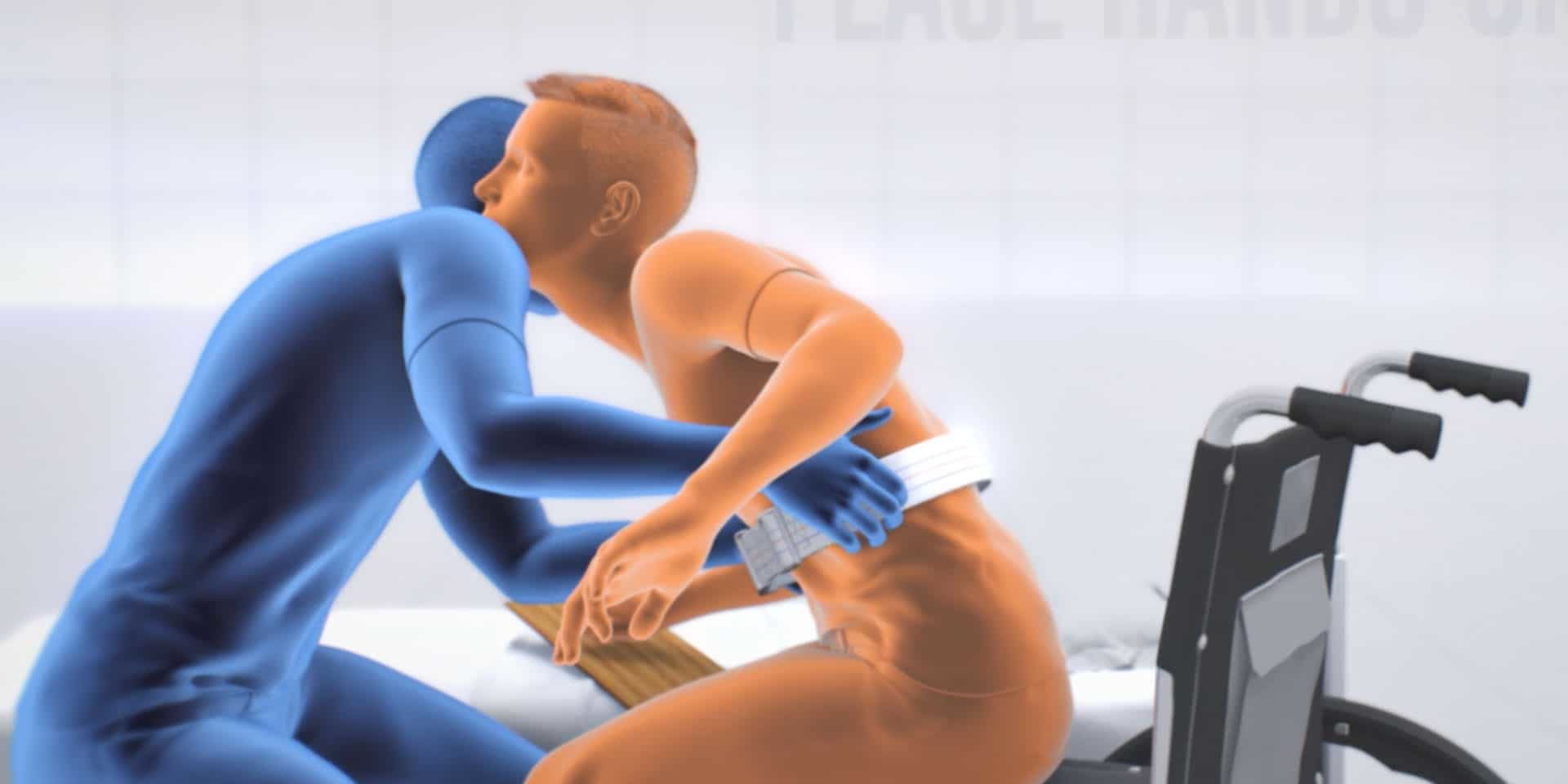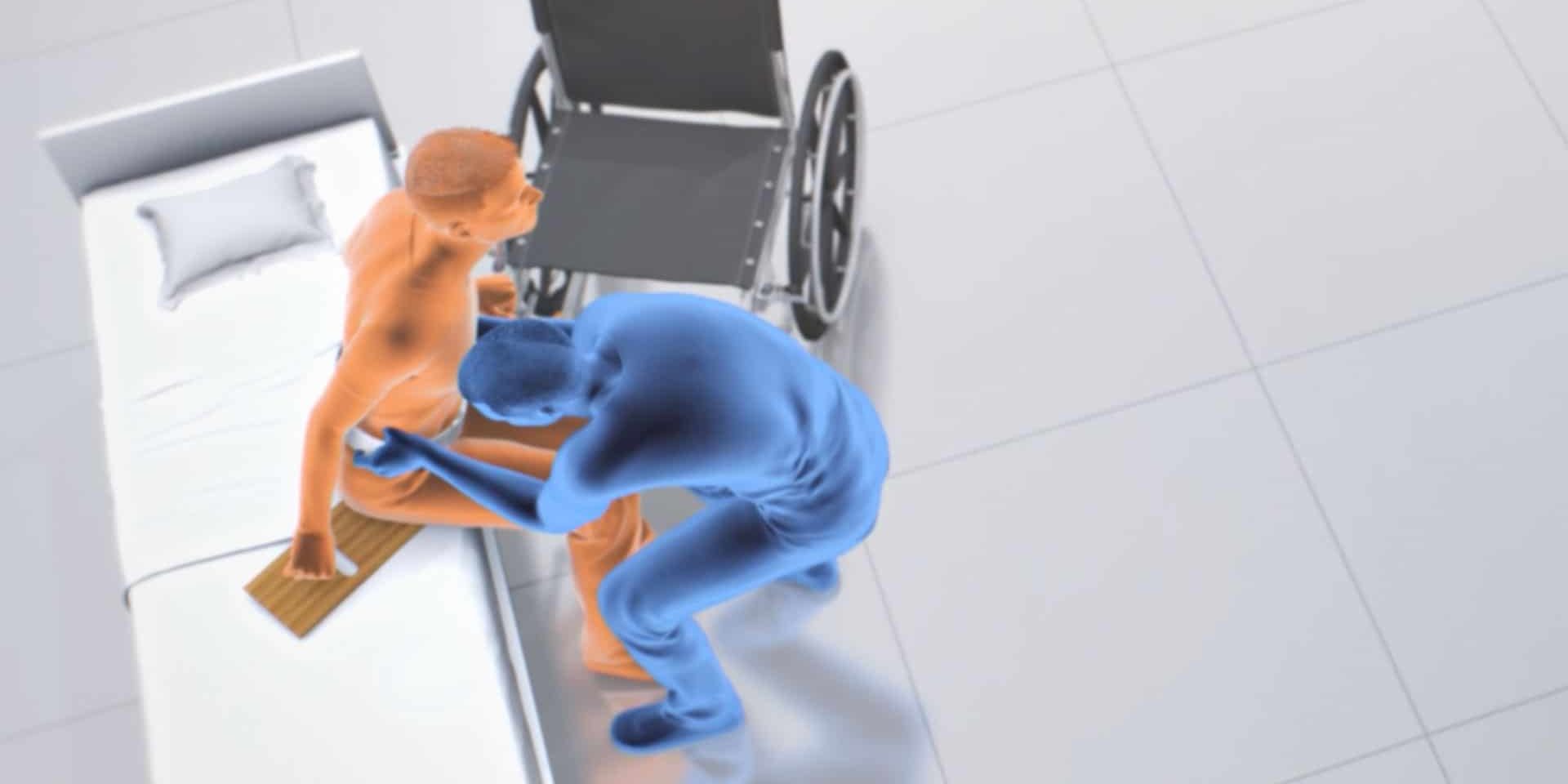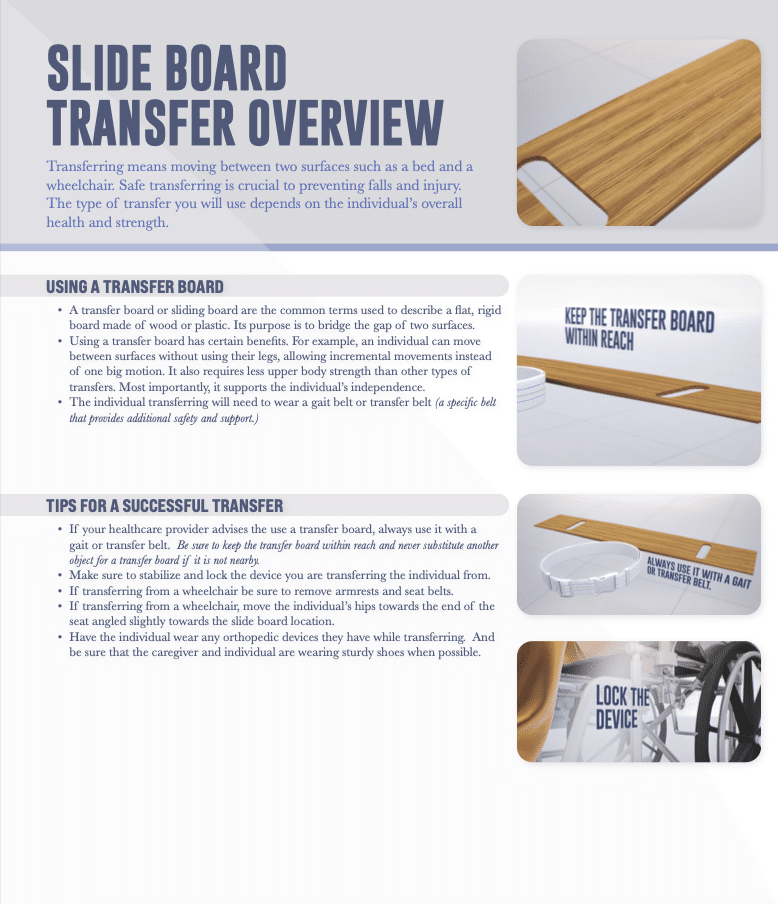- A transfer board or sliding board are the common terms used to describe a flat, rigid board made of wood or plastic. Its purpose is to bridge the gap between two surfaces.
- Using a transfer board has certain benefits. For example, an individual can move between surfaces without using their legs, allowing incremental movements instead of one big motion. It also requires less upper body strength than other types of transfers. Most importantly, it supports the individual’s independence.
- The individual transferring will need to wear a gait belt or transfer belt (a specific belt that provides additional safety and support.)
Slide Board Transfer Overview
Transferring means moving between two surfaces such as a bed and a wheelchair. Safe transferring is crucial to preventing falls and injury. The type of transfer you will use depends on the individual’s overall health and strength.
Using a Transfer Board
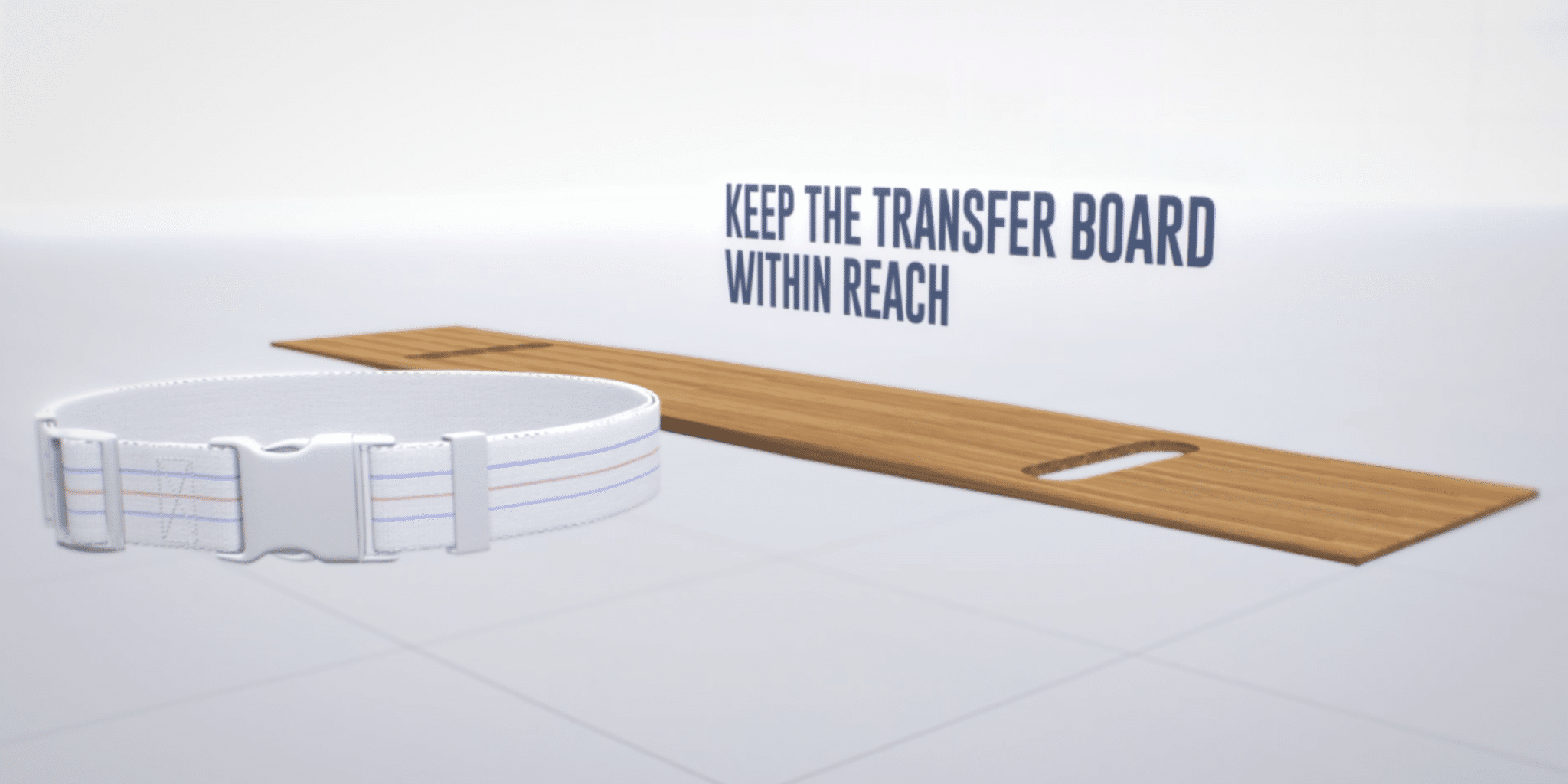
Tips for a Successful Transfer
- If your healthcare provider advises the use a transfer board, always use it with a gait or transfer belt. Be sure to keep the transfer board within reach and never substitute another object for a transfer board if it is not nearby.
- Make sure to stabilize and lock the device you are transferring the individual from.
- If transferring from a wheelchair be sure to remove armrests and seat belts.
- If transferring from a wheelchair, move the individual’s hips towards the end of the seat angled slightly towards the slide board location.
- Have the individual wear any orthopedic devices they have while transferring. And be sure that the caregiver and individual are wearing sturdy shoes when possible.
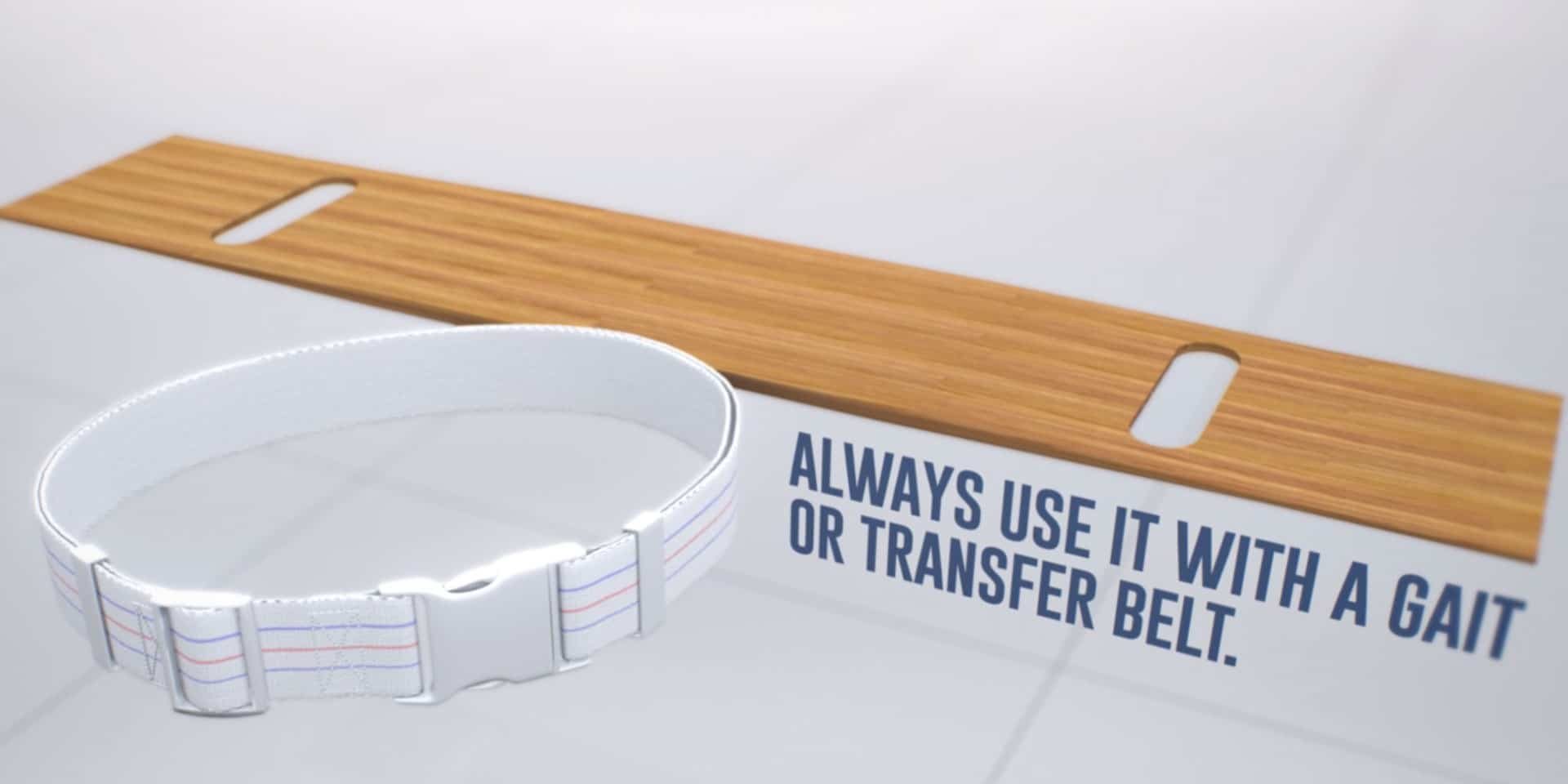
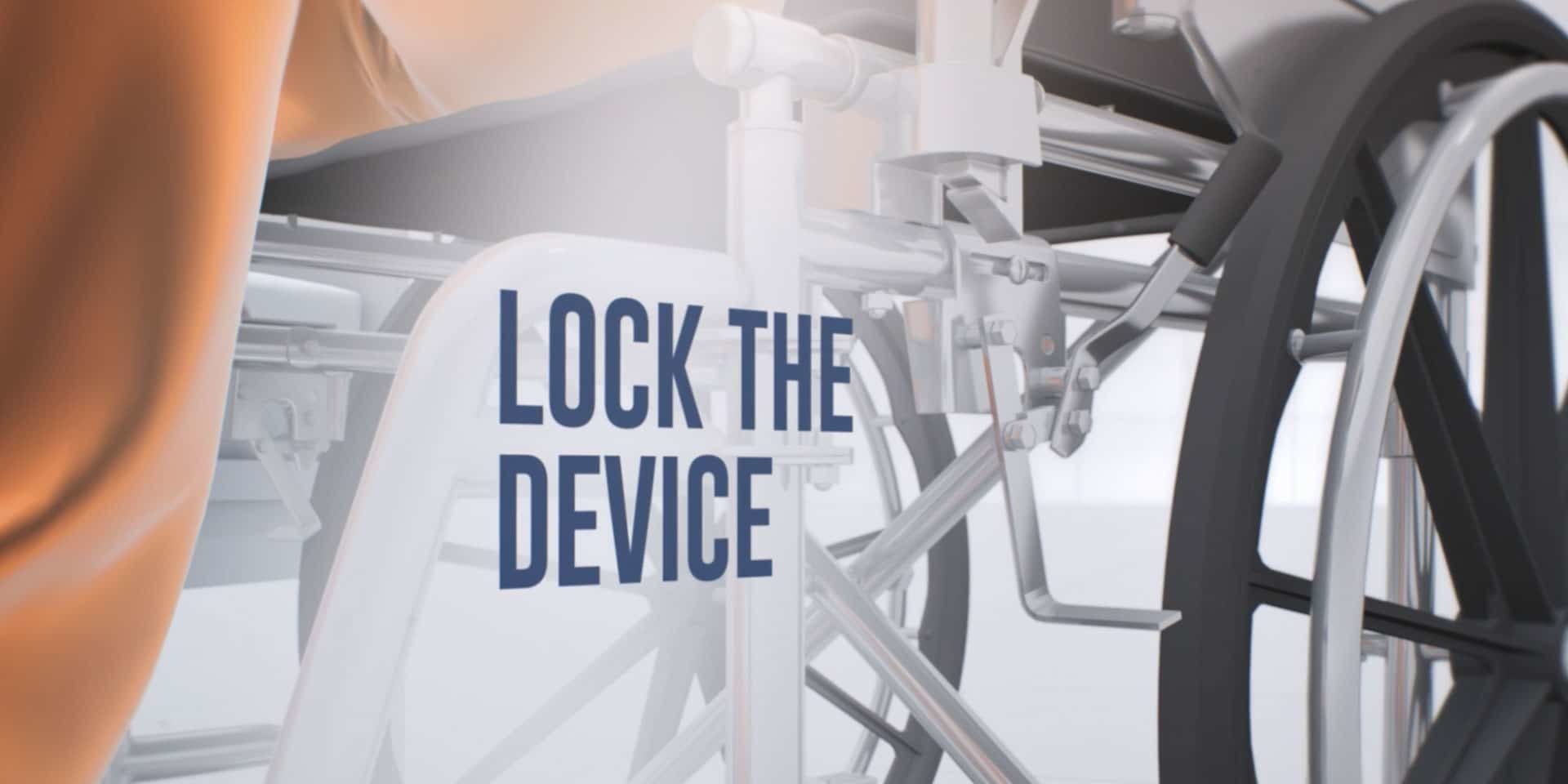
Slide Board Transfer Steps
If your healthcare provider advises the use a transfer board, always use it with a gait or transfer belt. Be sure to keep the transfer board within reach and never substitute another object for a transfer board.
Step 1 - Placing the Slide Board
- Lift the inside leg and slide the transfer board with the rough side down under the upper thigh and bottom.
- Use an angle motion to push the tip of the board into the cushion of the wheelchair seat to avoid pinching skin.
- Make sure ⅓ of the transfer board is under the thigh and bottom of the individual and the other end of the board is securely placed on the transfer destination.

Step 2 - Transferring Across the Slide Board
- Make sure the individual’s feet are directly ahead or slightly tilted away from the direction of the transfer.
- Have the individual lean away from the transfer surface. The caregiver will place their hands along the individual’s hips or on each side of the gait belt to help guide the movement.
- Work together and use a countdown to coordinate your movements. Be sure the individual clears the wheels or other parts of the wheelchair.
- The caregiver should provide as much assistance as needed to have the individual carefully and slowly move across the slide board. Have the individual pay close attention to their movements and the location of their body parts as they transfer across the board.
- Make sure to transfer between surfaces of similar height or to a slightly lower surface. This reduces the effort required of the caregiver and individual using the slide board.
- Protect the individual’s skin by ensuring their skin does not get pinched or rubbed during the transfer. For example, don’t drag buttocks across the board and always wear clothing or use a transfer sheet. A transfer sheet is a fabric that helps ease movement during transfers.
- Remember to keep the individual’s body parts in the correct position.
- Make sure the individual’s feet are flat on the floor throughout most types of transfers.
- As the individual moves across the board stop as needed and reposition their legs and feet. Do this movement one leg at a time, keeping each foot aligned with the knee.
- To prevent stress on the wrist or overstretching hands while moving, try making fists instead of open hands. Support body weight on the flat surface between the knuckles.
- When transferring, never put your hands or fingers under the board.
- If the individual has decreased strength or sensation in their upper body, work with the caregiver to help with the transfer.
- As the individual grows more comfortable using a transfer board, they may learn to transfer without a caregiver. At this point, they may use special transfer board equipment to help them transfer independently.
